Explore the contents of this article:
⋅ Assess Your Sitting Score
⋅ How to Ease Into Working While Standing
⋅ Dynamic Sitting
⋅ Take a Mobilization Break
You’ve heard it before: Sitting, especially for long periods of time, is not good for you — and a single bout of daily exercise does not cancel out the time you spend in the warm embrace of a chair.
Yet that isn’t the whole message. It’s not so much that sitting is bad; it’s that moving is a whole lot better.
One of the best ways to work movement into your life is to stand for a greater portion of your day. Standing is where the action is because standing is a gateway to movement.
In this adaptation from our latest book, Built to Move: The 10 Essential Habits to Help You Move Freely and Live Fully, we’ll walk you through assessing your own sitting habits — plus offer ideas on how to stand up for your health.
Assess Your Sitting Score
In the last several years, study after damning study has called out the health risks of prolonged sitting. Yet despite broadly worded recommendations to restrict our sedentary behavior, there are still no official guidelines telling us exactly how much sitting is too much.
Given what’s practical for most people, we believe aiming to limit your sitting to six hours a day is a reasonable ask. As experts in movement, we think this number squares with how much sitting the body can tolerate before it begins to take a toll on mobility.
How well do you move after hunkering down in a chair for 10 to 12 hours? We wager that you feel stiff and clunky. You don’t need a study to tell you that a king-size dose of sitting is detrimental to your body.
Still, sitting is so fundamental to modern life that many people ignore the damage it does, let alone realize how many hours they spend in the same position day after day. If you’re one of these people, now is your chance to find out.
This assessment will take you through a 24-hour period during which you’ll note any time you sit in a chair, park yourself on a stool or bench or bed (while sitting, not lying down), or nestle your body into a sofa. We suggest doing the assessment on a typical weekday (weekdays are when most people spend a good share of the day sitting).
Two types of sitting get a pass: sitting or squatting on the floor and exercising while sitting. Cyclists, rowers, kayakers, and other exercisers who work out in a seated position don’t need to add that time to their sitting inventory.
The Test
From the time you get up in the morning to the time you hop into bed in the evening, track the time you spend sitting. This includes sitting at your desk, on your couch, in a car, at a café, while riding public transportation, and more. Again, there are only two exceptions: sitting or squatting on the floor and exercising in a seated position.
Your score is the number of hours you spent sitting during your assessment. Round minutes below 30 down and minutes above 30 up (for example, 7 hours 26 minutes is 7 hours; 7 hours 45 minutes is 8 hours).
If you’re surprised by how much you sit, you’re not alone. Some of the most well-trained athletes we know get a shock when they calculate their numbers. What’s important now is that you’re aware of it and can take steps — literal steps! — to avoid prolonged periods of sitting.
What your results mean:
This is what your score tells you about where you are and where you can strive to be.
- 6 hours or less: We’re impressed! Unless you have a job that requires standing (and maybe you do), it’s not easy to hit this mark. Keep it up.
- 7 to 9 hours: Depending on where you are in this range, we give you a B+ to a C+. If you’re at 9 hours, it may seem like a big leap to get down to 6, but our experience tells us that once you start spending more time out of a chair, change comes fairly easily. You’ll begin to want to sit less.
- 10 to 12 hours: You earn a solid C-. You need to reformat your days substantially, but we’ve seen hundreds of people do it. So can you.
- 13+ hours: We regret to say that you are failing in this one area. The most important thing for you to remember is that you don’t have to change overnight. It’s not only fine to gradually increase the time you spend on your feet rather than in a chair, but it’s also preferable.
When to retest:
How often should you retest? Daily. Tracking the hours you spend sitting each day can help you build awareness around your habits — and provide a jumping-off point to make changes. You might discover that certain factors keep you seated longer than what is recommended, and you might develop internal alerts to increase the amount of time you spend standing or moving.
Taking a Stand
While some physical practices we discuss in Built to Move aim to get you to move in specific ways to extend your range of motion — such as doing hip-extension and shoulder-rotation mobilizations — the physical practice of standing just aims to help you be less sedentary. If you stand, you’re going to end up moving more.
Granted, standing is not moving, strictly speaking, and it can be pretty stationary if you allow it to be. But chances are you won’t. In our experience, standing makes you want to move. In fact, for comfort’s sake, it requires that you do move.
If you watch someone standing for more than a few minutes — or recall any time you have stood for a long time — you might notice how hard it is to stay still. You might sway your hips, shuffle your feet around, bend your knees, shift your weight, find something to lean on, cross and uncross your arms.
Few people can stand like a sentry for any length of time; the body moves to establish stability and equilibrium. And this small amount of movement, which you might call fidgeting and which some researchers refer to as “spontaneous physical activity,” adds up to quite a bit of energy expenditure over time.
If you care about calories, that is a good incentive to sit less and stand more. But there are other reasons as well.
Researchers in Japan have found that workers who decreased their sitting time had decreased shoulder and neck pain. Other studies have found that using adjustable sit–stand workstations leads to less back pain.
On the flip side, we know that stagnating in a seated position is an invitation to back pain and that back pain makes people move less in their chairs — a vicious cycle if ever there was one.
When you sit for long periods and feel pain, it’s not hard to connect the two. But there are also plenty of unhealthy conditions caused by prolonged sitting that you might not even know are developing until it’s too late: impaired vascular function, high blood pressure, poor blood-sugar metabolism, inflammation, reduced blood flow to the brain, and even a blunting of the beneficial effects of exercise, such as lowering triglycerides and insulin levels.
One reason this happens is that when you’re seated in a chair, your leg musculature becomes passive and consequently doesn’t require much energy. In response, many things, including blood flow and blood-sugar metabolism, slow down.
If, on the other hand, you’re standing, your legs are loaded — they have to work to support your upper-body weight. This taxes the system for the better.
There’s a particular gain for exercisers as well. Too often, people who work out in the morning or during lunch go right from redlining their internal engines to just sitting. We know that is not the best way to facilitate maximal adaptation to exercise, nor does it give the heart rate and body temperature time to slowly return to normal.
Also, encased in a chair or a car’s seat, you’re not promoting circulation, which can cause your muscles and connective tissues to stiffen up.
What do you think the difference will be between going for a run after standing at a desk for three hours and going for a run after sitting for three hours? You’ll have a different experience.
You can test this. Sit for an hour and go sprint; then stand and fidget for an hour and go sprint. Your poststanding time is going to best your postsitting time.
The Change “Up”
Although we hope you’ll shoot for the moon — sitting only six or fewer hours a day — our ultimate goal is to have you spend less time sitting in the same position. There are lots of ways to do that, whether it be by using a standing desk or toggling back and forth between a standing and a sitting desk; taking frequent breaks from your regular sitting desk; doing some of your working or viewing at a kitchen counter; or making a personal policy of not sitting on public transportation or in waiting rooms.
You can do any or all of the above, changing your strategies as the day allows. You can even stay seated and employ some movement tactics there.
What follows are the physical practices that can help you reach your goals to move more.
How to Ease Into Working While Standing
Consider these tips when you’re setting up a standing workstation, starting from the bottom up.
Get cushioned.
Standing static on a hard surface is a fast track to discomfort. Wear a cushioned shoe or add cushioning with a rug, exercise mat, or antifatigue mat created especially for people who stand for long periods of time.
Adjust desk height.
Many fixed-height standing desks are 40 to 42 inches tall, and there are adjustable solutions that sit on top to give you more leeway in terms of surface height. To find the right height, use this rule of thumb: Standing at your desk, bend your elbows so your forearms are parallel to the floor. The desk should be at elbow height plus one inch. We say should, not must, because you’ve got to see how it feels. If it doesn’t feel good, that’s a sign to adjust up or down.
Assume the ideal standing position.
The point of using a standing desk is to move more, so you’re going to automatically assume many different positions during your standing sessions. But during those times you’re standing straight, the best position is this: Stand comfortably with your feet straight and underneath your hips, with 50 percent of your weight on the balls of your feet and 50 percent of your weight on the heels.
Support your stance.
If you have the right accessories next to you, your body will naturally figure out how to use them to lighten its load and stay in equilibrium. Placing a barstool — preferably one with a flat seat and squared edges that’s about the height of your inseam — behind you gives you a surface to occasionally perch on, lean back against, or rest your foot on.
The other workstation essential we recommend is a foot support that, by allowing you to prop up one foot, can make it easier to stand comfortably.
Train to stand.
We really mean it: You need to train for using a standing workstation like you’d train for a marathon. Just as you wouldn’t go from spending your waking days on the couch to running 26.2 miles, you shouldn’t go from years of sitting to standing eight hours a day. If you do, it’s going to be painful.
Take it slow.
Start out with a half hour a day and increase at a pace that feels right.
And remember: You don’t need to stand perfectly still. If you’re itching to move, then move! Sway your hips. March in place. Do some stretches. Let your body be your guide.
Dynamic Sitting
We understand that some people won’t or can’t use a standing workstation. But moving more while seated is possible. Whether you sit all the time or rotate between sitting and standing, these are three ways to keep moving.
1) Breathe
This isn’t so much about moving as it is about avoiding the tendency to curl up like a shrimp while sitting at a desk, straining your neck, shoulders, back, and on down the line. When seated, get into a shape that allows you to take a deep breath. If you can’t breathe deeply into your belly, it’s a sign that you’re not in a movement-friendly position. Once you’re where you can breathe fully, then you can think about starting to move more.
2) Gear up
We recommend two things to help you move more while sitting. One is a fidget bar. There are several of these footrest devices on the market that provide a little resistance as you swing them or push against them. (You can use them with standing desks too.)
The other item we recommend is a chair that allows for greater movement of the torso. The “active seating” category includes chairs, stools, and balls. We don’t have a favorite, just an overall rule of thumb: Your desk chair should not resemble a cozy little alcove for you to slump into.
3) Rise up
Baseball has the seventh-inning stretch; you can have the half-hour stretch. Do whatever it takes to remind yourself to get out of your chair every 30 minutes. Set an electronic alert on your computer or an alarm on your watch — and obey it! Get up for a minute or more and move (try these one-minute moves to refresh your mind and body). If you can’t stand up, use that alert to just move more within the confines of your chair.
Take a Mobilization Break!
You can do these two mobility exercises at or next to your desk to balance out the effects of sitting.
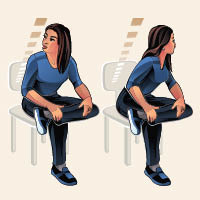
Elevated Pigeon
- While sitting in a chair, keeping one foot flat on the floor, bend your other leg and place your ankle on top of your bent knee so that your legs form a “4” shape.
- Place your hands on your bent leg, lean forward slightly, and rotate toward your left side, then toward your right side.
- Continue alternating between the two positions, rotating left and right, for two minutes or as long as possible.
- Repeat on the opposite side.
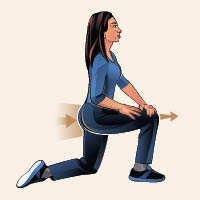
Kneeling Isometric
- Kneel on the floor with your right leg at a 90-degree angle and your left knee on the floor behind you. Maintain an upright torso and place your hands on your right knee.
- Squeeze the right side of your butt and move your right knee forward as far as you can — it won’t go far with your butt squeezed — and hold the position.
- Keep your butt engaged as you breathe — five slow inhales, five slow exhales — for one minute. Make sure you keep the working side of your butt engaged for the entire minute.
- Repeat on the opposite side.
Creating an environment that keeps you moving is a way to limit or even eliminate the option of too often just sitting. By design, we’re meant to be in motion all day, not necessarily in grand gestures like an hour in the pool or on a running path, but by frequently changing positions, adjusting the body’s load, fidgeting. There’s always been derisiveness directed at people who “can’t sit still,” but we’d argue that those people have the right idea. Moving often is imperative, whether you’re sitting or not.
From BUILT TO MOVE: The 10 Essential Habits to Help You Move Freely and Live Fully by Kelly Starrett and Juliet Starrett. Reprinted by permission of Alfred A. Knopf, an imprint of The Knopf Doubleday Publishing Group, a division of Penguin Random House LLC. Copyright © 2023 by Kelly Starrett and Juliet Starrett.
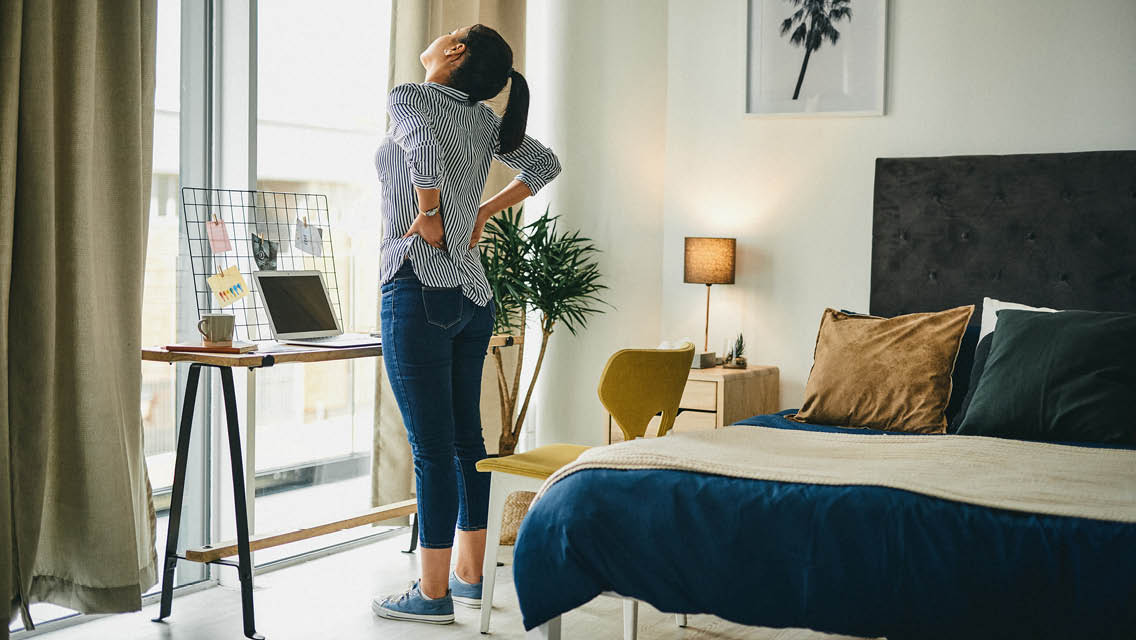

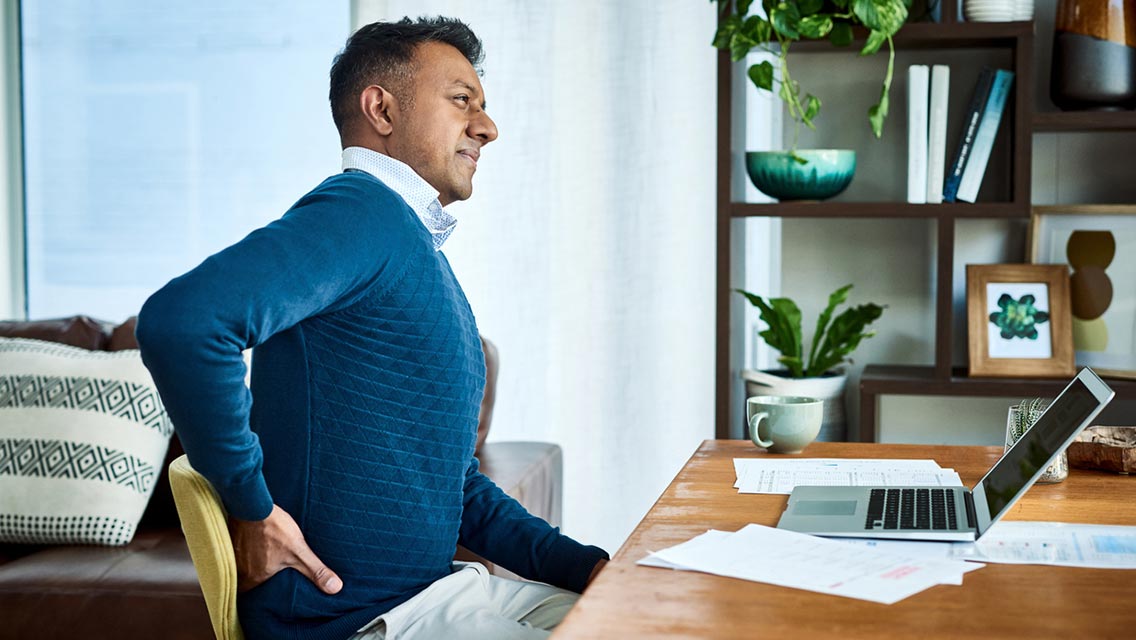
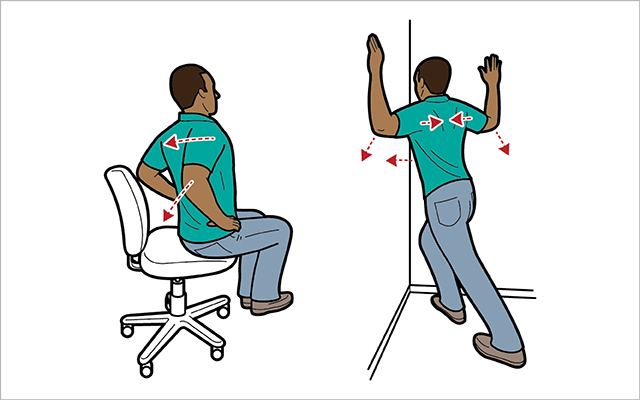

This Post Has One Comment
I needed to read this today. Thank you for the tips. I will start incorporating them in my daily routine — the sitting has got out of hand.